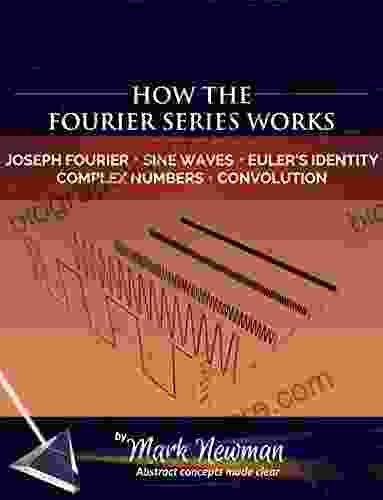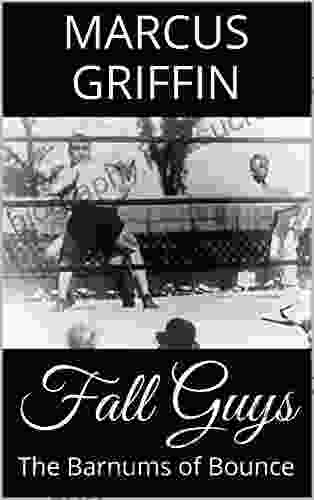Delving into the Intriguing World of the Fourier Transform: A Comprehensive Guide

In the realm of scientific research and engineering, the Fourier transform reigns supreme as an indispensable mathematical tool. This extraordinary mathematical operation acts as a gateway into the hidden realm of frequencies, enabling us to decompose complex signals and systems into their individual frequency components. By ng so, it unveils a wealth of information about the behavior and characteristics of the underlying data. In this comprehensive guide, we embark on a journey to unravel the intricacies of the Fourier transform, exploring its theoretical foundations, practical applications, and far-reaching impact across various disciplines.
The Fourier transform, named after the renowned French mathematician Jean-Baptiste Joseph Fourier, is an integral transform that converts a signal from the time domain to the frequency domain. This transformation effectively decomposes the signal into a collection of sine and cosine waves, each oscillating at distinct frequencies. The output of the Fourier transform is a complex function that represents the amplitude and phase of each frequency component within the signal.
The mathematical equation for the Fourier transform of a continuous function f(t) is given by:
4 out of 5
| Language | : | English |
| File size | : | 8206 KB |
| Print length | : | 313 pages |
| Lending | : | Enabled |
| X-Ray for textbooks | : | Enabled |
| Screen Reader | : | Supported |
F(ω) = ∫_-∞^∞ f(t) * e^(-iωt) dt
where ω represents the angular frequency.
To visualize the Fourier transform in action, consider a musical note played on a piano. The note can be represented as a time-varying waveform that oscillates at a specific frequency, corresponding to the pitch of the note. When the Fourier transform is applied to this waveform, it decomposes the note into its constituent frequencies. The resulting spectrum reveals the fundamental frequency of the note, along with any harmonics or overtones that contribute to its unique timbre.
The Fourier transform finds widespread applications in a vast array of scientific and engineering fields, including:
Signal Processing:
- Noise reduction and filtering
- Data compression
- Image processing
Electronics:
- Frequency analysis of electrical circuits
- Design of filters and modulators
- Signal transmission and reception
Physics:
- Diffraction and interference of light
- Quantum mechanics
- Spectroscopy
Astronomy:
- Analysis of celestial objects and their spectra
- Imaging techniques in radio astronomy
- Understanding the dynamics of planetary atmospheres
Advantages:
- Provides a powerful means of analyzing signals and systems in the frequency domain.
- Enables the extraction of hidden features and patterns in data.
- Facilitates the design and optimization of signal processing algorithms.
Limitations:
- Assumes that signals are periodic, which may not always be the case.
- May be computationally expensive for large datasets.
- Can be sensitive to noise and artifacts in the input signal.
To overcome some of the limitations of the Fourier transform, several extensions have been developed, including:
Discrete Fourier Transform (DFT): Used for analyzing discrete-time signals, commonly encountered in digital signal processing.
Fast Fourier Transform (FFT): An efficient algorithm that significantly reduces the computational complexity of the DFT.
Short-Time Fourier Transform (STFT): Captures the time-frequency characteristics of non-stationary signals.
Wavelet Transform: Provides multi-resolution analysis, enabling localized frequency analysis.
The Fourier transform stands as a cornerstone of modern scientific and engineering research, providing an unparalleled window into the hidden realm of frequencies. Its ability to decompose signals into their individual frequency components has revolutionized our understanding of complex systems and phenomena. From noise reduction in audio signals to image compression and medical imaging, the Fourier transform continues to play a vital role in shaping our technological advancements. As we delve deeper into the complexities of the 21st century, the Fourier transform will undoubtedly remain an indispensable tool, unlocking new possibilities and driving innovation across a wide spectrum of disciplines.
4 out of 5
| Language | : | English |
| File size | : | 8206 KB |
| Print length | : | 313 pages |
| Lending | : | Enabled |
| X-Ray for textbooks | : | Enabled |
| Screen Reader | : | Supported |
Do you want to contribute by writing guest posts on this blog?
Please contact us and send us a resume of previous articles that you have written.
 Fiction
Fiction Non Fiction
Non Fiction Romance
Romance Mystery
Mystery Thriller
Thriller SciFi
SciFi Fantasy
Fantasy Horror
Horror Biography
Biography Selfhelp
Selfhelp Business
Business History
History Classics
Classics Poetry
Poetry Childrens
Childrens Young Adult
Young Adult Educational
Educational Cooking
Cooking Travel
Travel Lifestyle
Lifestyle Spirituality
Spirituality Health
Health Fitness
Fitness Technology
Technology Science
Science Arts
Arts Crafts
Crafts DIY
DIY Gardening
Gardening Petcare
Petcare Basudeb Bhatta
Basudeb Bhatta Brandon Royal
Brandon Royal Melissa Haag
Melissa Haag Mike Commito
Mike Commito Diane Yancey
Diane Yancey Mitch Prinstein
Mitch Prinstein Kam Knight
Kam Knight Ryan T White
Ryan T White Barry Rhodes
Barry Rhodes Titus M Kennedy
Titus M Kennedy John Sandford
John Sandford Randy Baker
Randy Baker Gordon H Chang
Gordon H Chang Brian Switek
Brian Switek Eddie Merrins
Eddie Merrins Maha Alkurdi
Maha Alkurdi Barry Glassner
Barry Glassner Farzana Nayani
Farzana Nayani Martin Sternstein
Martin Sternstein Chuck Missler
Chuck Missler Anthony Edwards
Anthony Edwards Monta Z Briant
Monta Z Briant T H White
T H White Max Marchi
Max Marchi Jutta Schickore
Jutta Schickore John Garrity
John Garrity Alastair Hannay
Alastair Hannay Basu Shanker
Basu Shanker Dacher Keltner
Dacher Keltner Ryan A Pedigo
Ryan A Pedigo Ronald Wheeler
Ronald Wheeler Sampson Davis
Sampson Davis Mark Young
Mark Young Barry Rabkin
Barry Rabkin Jeffrey Jensen Arnett
Jeffrey Jensen Arnett Becca Anderson
Becca Anderson Justin Sirois
Justin Sirois Robert A Baruch Bush
Robert A Baruch Bush Fred Mitchell
Fred Mitchell Chiara Sparks
Chiara Sparks Erica B Marcus
Erica B Marcus Alexandra Andrews
Alexandra Andrews Nichole Carpenter
Nichole Carpenter Jaymin Eve
Jaymin Eve Stephen J Bavolek
Stephen J Bavolek T C Edge
T C Edge Farley Mowat
Farley Mowat Ellen Notbohm
Ellen Notbohm Burt L Standish
Burt L Standish Mark Kurlansky
Mark Kurlansky Jane Butel
Jane Butel Bagele Chilisa
Bagele Chilisa S K Gupta
S K Gupta Sam Kean
Sam Kean Editors Of Southern Living Magazine
Editors Of Southern Living Magazine Craig Lambert
Craig Lambert Chris Mooney
Chris Mooney Stanislas Dehaene
Stanislas Dehaene Betty Stone
Betty Stone Mackenzi Lee
Mackenzi Lee Lew Freedman
Lew Freedman Larry Dane Brimner
Larry Dane Brimner Kindle Edition
Kindle Edition Daniel S Lobel Phd
Daniel S Lobel Phd James Duggan
James Duggan David Taylor
David Taylor Master Gamer
Master Gamer Roanne Van Voorst
Roanne Van Voorst Joanne Glenn
Joanne Glenn Gay Robins
Gay Robins Dr Faith G Harper
Dr Faith G Harper Mark H Newman
Mark H Newman Jack Andraka
Jack Andraka Ron Lemaster
Ron Lemaster Emma Brockes
Emma Brockes Jenn Mcallister
Jenn Mcallister Michelle Rigler
Michelle Rigler Lewis Thomas
Lewis Thomas Martin Dugard
Martin Dugard James Koeper
James Koeper J Michael Veron
J Michael Veron Jim Wharton
Jim Wharton James Kilgo
James Kilgo Ian Leslie
Ian Leslie James C Radcliffe
James C Radcliffe Sharon Dukett
Sharon Dukett Vanessa Garbin
Vanessa Garbin Autumn Carpenter
Autumn Carpenter Jill Brown
Jill Brown Dustin Hansen
Dustin Hansen Debbie M Schell
Debbie M Schell Rowan Jacobsen
Rowan Jacobsen Nicholas Sparks
Nicholas Sparks Bruce Pascoe
Bruce Pascoe David Klausmeyer
David Klausmeyer Mark Ellyatt
Mark Ellyatt Beau Bradbury
Beau Bradbury Jessica Smartt
Jessica Smartt Leah Cullis
Leah Cullis Barbara Taylor
Barbara Taylor Nadine Hays Pisani
Nadine Hays Pisani Joseph Alton M D
Joseph Alton M D Nicholas Wolterstorff
Nicholas Wolterstorff Valerie Pollmann R
Valerie Pollmann R Christopher Taylor Ma Lmft
Christopher Taylor Ma Lmft Nick Bollettieri
Nick Bollettieri Jonathan Bergmann
Jonathan Bergmann Richard J Dewhurst
Richard J Dewhurst Massimo Cossu Nicola Pirina
Massimo Cossu Nicola Pirina Bob Holtzman
Bob Holtzman David Jamieson Bolder
David Jamieson Bolder Barbara Illowsk
Barbara Illowsk Jake Anderson
Jake Anderson Jim Fay
Jim Fay Cynthia Levinson
Cynthia Levinson Leslie Stager
Leslie Stager Lock Gareth
Lock Gareth Bill Milliken
Bill Milliken Charles Soule
Charles Soule Mike High
Mike High Constanze Niedermaier
Constanze Niedermaier Mark Rashid
Mark Rashid James Randi
James Randi Cary J Griffith
Cary J Griffith Charlotte Browne
Charlotte Browne Candice Davie
Candice Davie Mike Swedenberg
Mike Swedenberg Melissa Gomes
Melissa Gomes Shmuel Peerless
Shmuel Peerless Graham Farmelo
Graham Farmelo Toby A H Wilkinson
Toby A H Wilkinson Sam Cowen
Sam Cowen Dave Karczynski
Dave Karczynski Margaret Owen
Margaret Owen Nancy E Willard
Nancy E Willard Joseph Schmuller
Joseph Schmuller Percy Boomer
Percy Boomer Smart Reads
Smart Reads Peter Martin
Peter Martin Ralph Galeano
Ralph Galeano Janna Levin
Janna Levin Prince Asare
Prince Asare Susan Scott
Susan Scott Cara Koscinski
Cara Koscinski R L Medina
R L Medina Barbara Ann Kipfer
Barbara Ann Kipfer Diane Musho Hamilton
Diane Musho Hamilton Sean Mcindoe
Sean Mcindoe Kara Goucher
Kara Goucher Christopher L Heuertz
Christopher L Heuertz David Burch
David Burch Bridget Flynn Walker Phd
Bridget Flynn Walker Phd John Kimantas
John Kimantas Graham R Gibbs
Graham R Gibbs Conor Nolan
Conor Nolan Print Replica Kindle Edition
Print Replica Kindle Edition Benita Bensch
Benita Bensch Craig Romano
Craig Romano Elizabeth George Speare
Elizabeth George Speare John Lister Kaye
John Lister Kaye Stephen K Sanderson
Stephen K Sanderson Charlotte Booth
Charlotte Booth Jennifer Estep
Jennifer Estep Clifford Herriot
Clifford Herriot Patrick Sweeney
Patrick Sweeney Vincent Bossley
Vincent Bossley Barry Friedman
Barry Friedman Luke Gilkerson
Luke Gilkerson Mike Loades
Mike Loades Elizabeth Lockwood
Elizabeth Lockwood Samantha Fitts
Samantha Fitts Steve Burrows
Steve Burrows Richard Weissbourd
Richard Weissbourd Dr Michael P Masters
Dr Michael P Masters Chris Eberhart
Chris Eberhart Philip Maffetone
Philip Maffetone Molly E Lee
Molly E Lee Scott Malthouse
Scott Malthouse Timothy Pakron
Timothy Pakron Gordon Witteveen
Gordon Witteveen V B Alekseev
V B Alekseev Charlie Shamp
Charlie Shamp Yang Kuang
Yang Kuang Stan Tekiela
Stan Tekiela John H Mcwhorter
John H Mcwhorter Susan Nance
Susan Nance Rick Joyner
Rick Joyner Ben Goldacre
Ben Goldacre Denton Salle
Denton Salle Chadd Vanzanten
Chadd Vanzanten Violet Moller
Violet Moller David Starbuck Smith
David Starbuck Smith Ron Avery
Ron Avery Kate Darling
Kate Darling Bill Mckibben
Bill Mckibben Barbara Bassot
Barbara Bassot Helen Fisher
Helen Fisher Hongyu Guo
Hongyu Guo C R Hallpike
C R Hallpike Wanda Priday
Wanda Priday Chase Hill
Chase Hill Robert Hogan
Robert Hogan Cait Stevenson
Cait Stevenson Lynn Rosen
Lynn Rosen Stefan Ecks
Stefan Ecks Beth Miller
Beth Miller Sport Hour
Sport Hour Babu The Panda
Babu The Panda Brad Burns
Brad Burns Laura Pavlov
Laura Pavlov Mia Scotland
Mia Scotland Barry Burd
Barry Burd Erik J Brown
Erik J Brown Tom Miller
Tom Miller John J Robinson
John J Robinson Janis Keyser
Janis Keyser F William Lawvere
F William Lawvere Kate Williams
Kate Williams Marc Loy
Marc Loy Breanna Hayse
Breanna Hayse Jenny Chandler
Jenny Chandler Robin Mcmillan
Robin Mcmillan Kathleen Masters
Kathleen Masters Beau Miles
Beau Miles Deanna Roy
Deanna Roy Chris Bennett
Chris Bennett James Syhabout
James Syhabout Temple West
Temple West Jesse Liberty
Jesse Liberty Jennifer Pharr Davis
Jennifer Pharr Davis Malcolm Hebron
Malcolm Hebron Eric Franklin
Eric Franklin Richard Chun
Richard Chun Jamie Margolin
Jamie Margolin Scott Mactavish
Scott Mactavish Leon Mccarron
Leon Mccarron Rob Pope
Rob Pope Nick Neely
Nick Neely Rachel Smith
Rachel Smith John Quick
John Quick Barbara Mertz
Barbara Mertz Edwin R Sherman
Edwin R Sherman Ellen Lewin
Ellen Lewin Karen Bush
Karen Bush Ernie Morton
Ernie Morton Erica Schultz
Erica Schultz Scott Westerfeld
Scott Westerfeld Charles Buist
Charles Buist Debra Kilby
Debra Kilby Jeff Alt
Jeff Alt Ken Xiao
Ken Xiao Ping Li
Ping Li Julian I Graubart
Julian I Graubart Edith Grossman
Edith Grossman Marco Grandis
Marco Grandis Khurshed Batliwala
Khurshed Batliwala Jade Barrett
Jade Barrett Susan Dennard
Susan Dennard Gary Lincoff
Gary Lincoff Jane Hardwicke Collings
Jane Hardwicke Collings David Aretha
David Aretha Jen Houcek
Jen Houcek Siddhartha Rao
Siddhartha Rao Visual Arts
Visual Arts William Byers
William Byers Bryan Peterson
Bryan Peterson Donald Frias
Donald Frias John Henry Phillips
John Henry Phillips Fabien Clavel
Fabien Clavel Geert Hofstede
Geert Hofstede Chris Cage
Chris Cage Steven Rinella
Steven Rinella Laura Ingalls Wilder
Laura Ingalls Wilder Crystal Duffy
Crystal Duffy Barzin Pakandam
Barzin Pakandam Grey Owl
Grey Owl Emma Walker
Emma Walker Jean Illsley Clarke
Jean Illsley Clarke Mykel Hawke
Mykel Hawke Daniel J Barrett
Daniel J Barrett Robert Ardrey
Robert Ardrey Steven Hawthorne
Steven Hawthorne Leia Stone
Leia Stone Peter Wacht
Peter Wacht Muhammad Zulqarnain
Muhammad Zulqarnain Allan V Horwitz
Allan V Horwitz Otto Scharmer
Otto Scharmer S E Hinton
S E Hinton Ray Comfort
Ray Comfort Buddy Levy
Buddy Levy Jean Smith
Jean Smith Rob Rains
Rob Rains Kenneth Wilgus Phd
Kenneth Wilgus Phd Lynn Mann
Lynn Mann Rebecca Solnit
Rebecca Solnit Pavla Kesslerova
Pavla Kesslerova David Cockburn
David Cockburn John G Robertson
John G Robertson Michael Palin
Michael Palin Carlo Collodi
Carlo Collodi Joseph Epes Brown
Joseph Epes Brown Matt Taddy
Matt Taddy Paul Doiron
Paul Doiron Geoffrey Finch
Geoffrey Finch Rachelle Zukerman
Rachelle Zukerman Bernard Marr
Bernard Marr Yuval Noah Harari
Yuval Noah Harari Rachel Morgan
Rachel Morgan Suzanne Leonhard
Suzanne Leonhard Tara Brach
Tara Brach Achille Rubini
Achille Rubini Catherine J Allen
Catherine J Allen Jonathan Kellerman
Jonathan Kellerman Marie Rutkoski
Marie Rutkoski J C Cervantes
J C Cervantes W Scott Elliot
W Scott Elliot Roy Porter
Roy Porter Mike Allison
Mike Allison Sam Nadler
Sam Nadler Daniel M Koretz
Daniel M Koretz Lawrence Baldassaro
Lawrence Baldassaro Glenna Mageau
Glenna Mageau Jude Currivan
Jude Currivan Scott Reed
Scott Reed Kyle Butler
Kyle Butler Gabriyell Sarom
Gabriyell Sarom Yuki Mano
Yuki Mano Shayla Black
Shayla Black Dan R Lynch
Dan R Lynch Howard Zinn
Howard Zinn Dan Golding
Dan Golding Dave Rearwin
Dave Rearwin Bashir Hosseini Jafari
Bashir Hosseini Jafari Vanessa Ogden Moss
Vanessa Ogden Moss Jenna Helland
Jenna Helland Joshua Hammer
Joshua Hammer Colleen Alexander Roberts
Colleen Alexander Roberts Hill Gates
Hill Gates Linda Carroll
Linda Carroll Emily Chappell
Emily Chappell Ben Sedley
Ben Sedley P J Agness
P J Agness Julie L Spencer
Julie L Spencer Mary A Fristad
Mary A Fristad Guy P Harrison
Guy P Harrison Daniel T Willingham
Daniel T Willingham J Bruce Brackenridge
J Bruce Brackenridge Catherine Shainberg
Catherine Shainberg Gerald Beaudry
Gerald Beaudry Craig Martin
Craig Martin Barbara Neiman
Barbara Neiman Linnea Dunne
Linnea Dunne Frederick Douglass Opie
Frederick Douglass Opie William Wasserman
William Wasserman Holger Schutkowski
Holger Schutkowski Stephanie Fritz
Stephanie Fritz Pearson Education
Pearson Education Jack Newman
Jack Newman Boy Scouts Of America
Boy Scouts Of America Daniel P Huerta
Daniel P Huerta Sam Harris
Sam Harris Sara Shepard
Sara Shepard Dr Craig Malkin
Dr Craig Malkin St Louis Post Dispatch
St Louis Post Dispatch John D Barrow
John D Barrow Eric Engle
Eric Engle Helen Kara
Helen Kara Trish Kuffner
Trish Kuffner Paul Van Lierop
Paul Van Lierop Julie Buxbaum
Julie Buxbaum Jay Abramson
Jay Abramson David Beaupre
David Beaupre Diane Cardwell
Diane Cardwell George Macdonald
George Macdonald David A Bogart
David A Bogart Hollis Lance Liebman
Hollis Lance Liebman Ben Collins
Ben Collins John Aldridge
John Aldridge Joshua G Shifrin
Joshua G Shifrin Linda Welters
Linda Welters Victor Seow
Victor Seow Clayton King
Clayton King William H Frey
William H Frey Bb
Bb Rob Hutchings
Rob Hutchings Isabel Fonseca
Isabel Fonseca Thomas Bulfinch
Thomas Bulfinch Simon Spurrier
Simon Spurrier Casey Watson
Casey Watson Kenton Kroker
Kenton Kroker Barry J Kemp
Barry J Kemp Robin Nixon
Robin Nixon Jennifer Traig
Jennifer Traig Rachel Dash
Rachel Dash Mark Mayfield
Mark Mayfield Robin Knox Johnston
Robin Knox Johnston Thomas French
Thomas French Reprint Edition Kindle Edition
Reprint Edition Kindle Edition Eugene V Resnick
Eugene V Resnick Barry Johnston
Barry Johnston Danny Staple
Danny Staple Christine Kenneally
Christine Kenneally Rhonda Belle
Rhonda Belle Richard Harris
Richard Harris Nick Townsend
Nick Townsend Barbara Rogoff
Barbara Rogoff Eliza Reid
Eliza Reid Mark Twain
Mark Twain Brian Gilbert
Brian Gilbert Jayanti Tambe
Jayanti Tambe Hunbatz Men
Hunbatz Men Tami Anastasia
Tami Anastasia Charles River Editors
Charles River Editors Kit Yates
Kit Yates Gary Soto
Gary Soto Noah Brown
Noah Brown Jeremy Sweet
Jeremy Sweet Tim Ingold
Tim Ingold John Whitman
John Whitman Richard Scott
Richard Scott David Abram
David Abram Donald R Gallo
Donald R Gallo Barbara Kennard
Barbara Kennard Jeff Belanger
Jeff Belanger Spencer Wells
Spencer Wells Elliott Vandruff
Elliott Vandruff Kara Tippetts
Kara Tippetts Meghan L Marsac
Meghan L Marsac Arny Alberts
Arny Alberts Ben Povlow
Ben Povlow Proper Education Group
Proper Education Group Edward Lee
Edward Lee Mike Stanton
Mike Stanton Scarlett Thomas
Scarlett Thomas Cheryl Erwin
Cheryl Erwin Arnold G Nelson
Arnold G Nelson Peter K Tyson
Peter K Tyson Nicole Martin
Nicole Martin Michael Wood
Michael Wood David Thomas
David Thomas Beebe Bahrami
Beebe Bahrami Shannon Reilly
Shannon Reilly Macauley Lord
Macauley Lord Mike Massie
Mike Massie Ryan Higa
Ryan Higa Baruch Englard
Baruch Englard Lily Collins
Lily Collins Ascencia
Ascencia James M Collins
James M Collins Nina Manning
Nina Manning Eric Leiser
Eric Leiser Catherine M Cameron
Catherine M Cameron W Hamilton Gibson
W Hamilton Gibson Monica Hesse
Monica Hesse Suzanne Wylde
Suzanne Wylde Steve Biddulph
Steve Biddulph Leonard M Adkins
Leonard M Adkins Rebecca Rupp
Rebecca Rupp Pat Shipman
Pat Shipman Thomas Lumley
Thomas Lumley Tim Marshall
Tim Marshall Richard H Immerman
Richard H Immerman Barbara Russell
Barbara Russell Marshall Jon Fisher
Marshall Jon Fisher Reelav Patel
Reelav Patel Barbara Gastel
Barbara Gastel Bonnie Tsui
Bonnie Tsui Oliver T Spedding
Oliver T Spedding John C Norcross
John C Norcross James Duthie
James Duthie Jessica F Shumway
Jessica F Shumway Dustin Salomon
Dustin Salomon Sergei Urban
Sergei Urban Mina Lebitz
Mina Lebitz Richard Meadows
Richard Meadows Harvey Wittenberg
Harvey Wittenberg Tori Day
Tori Day Steven Bell
Steven Bell Mick Conefrey
Mick Conefrey Joanna Hunt
Joanna Hunt Wayne B Chandler
Wayne B Chandler Blair Braverman
Blair Braverman Cindy Post Senning
Cindy Post Senning Bobbie Faulkner
Bobbie Faulkner
Light bulbAdvertise smarter! Our strategic ad space ensures maximum exposure. Reserve your spot today!

 Charles ReedPassword Keeper For Internet Login Web Address Usernames Password Journal:...
Charles ReedPassword Keeper For Internet Login Web Address Usernames Password Journal:... Elton HayesFollow ·17.4k
Elton HayesFollow ·17.4k Haruki MurakamiFollow ·8.2k
Haruki MurakamiFollow ·8.2k Camden MitchellFollow ·16.7k
Camden MitchellFollow ·16.7k Alfred RossFollow ·10.7k
Alfred RossFollow ·10.7k Devin RossFollow ·9.7k
Devin RossFollow ·9.7k Gregory WoodsFollow ·19k
Gregory WoodsFollow ·19k Jack PowellFollow ·18.3k
Jack PowellFollow ·18.3k Cruz SimmonsFollow ·3.7k
Cruz SimmonsFollow ·3.7k

 Israel Bell
Israel BellEmbark on an Epic 160-Mile Expedition for Charity on the...
Prepare yourself for an...

 Josh Carter
Josh CarterThe Way of the Wild Goose: A Journey of Embodied Wisdom...
The Way of the Wild Goose is an ancient...

 Allen Parker
Allen ParkerMastering the Art of Bean Fly Casting: A Comprehensive...
Fly fishing,...

 Aaron Brooks
Aaron BrooksSolving the Homework Problem by Flipping the Learning
What is flipped...

 Fletcher Mitchell
Fletcher MitchellThe Jane Butel Library: A Renewed Source of Knowledge and...
The Jane Butel...
4 out of 5
| Language | : | English |
| File size | : | 8206 KB |
| Print length | : | 313 pages |
| Lending | : | Enabled |
| X-Ray for textbooks | : | Enabled |
| Screen Reader | : | Supported |











